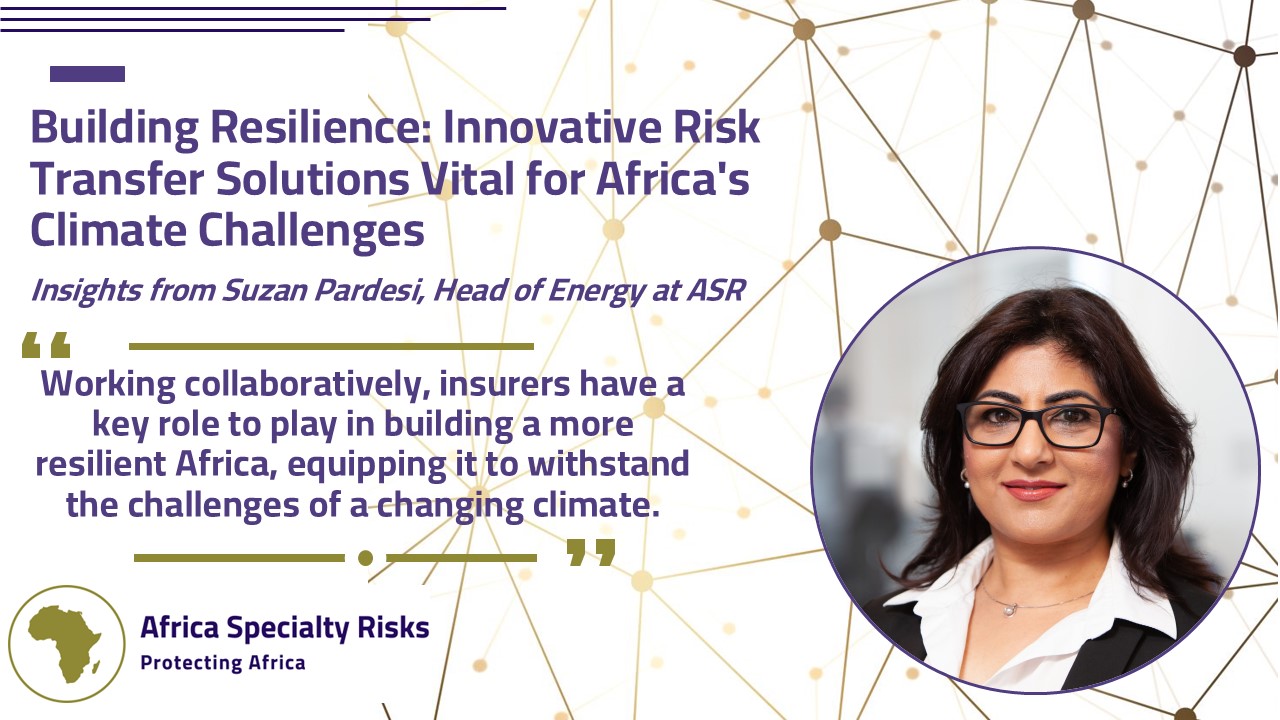The world is grappling with efforts to both deal with the impact of increasingly frequent climate related extreme weather events, alongside the need for investment in new energy infrastructure to limit further increases in global temperatures.
In just the last three years, Africa has been impacted by drought, cyclonic activity and heavy flooding. East Africa faced the worst drought in decades in 2021, with Cyclone Idai in 2019 and Cyclone Eloise in 2021 causing extensive damage to infrastructure and displacing thousands of people in Mozambique. In 2022 over 400 people died across KwaZulu-Natal in South Africa following heavy flooding, which caused more than $1.5bn of infrastructure damage.
Alongside this, for Africa’s next phase of development, there is an ever-increasing need for energy sources of all varieties. These may come in the form of traditional coal power plants where there is little alternative, but the most ambitious projects in Africa will look to utilise emerging technologies, such as green hydrogen and battery storage, and modernising the electricity grid itself.
For insurers, two questions emerge:
- How can they protect vulnerable populations and economies from the worst impacts of climate change?
- How can insurers facilitate investment in a new generation of energy technologies?
The scale of these challenges requires a new approach that moves beyond traditional insurance mechanisms and harnesses the power of insurers, governments and NGOs as well as investors to develop innovative risk transfer solutions. Captive solutions offer the ability for the insured to retain and manage risks within their own entities, increasing the flexibility to address and manage climate related exposure. Africa Specialty Risks offer businesses the chance to hedge against weather-related risks, increasing their resilience when faced with weather adverse events.
Alongside this, the creation of risk fund pools is an innovative approach to manage these risks. The pooling of resources across multiple entities and regions provides a mechanism to spread the financial burden of extreme weather events. Insurers can enhance their capacity to absorb large-scale losses, thereby providing greater stability and certainty to affected communities and economies.
This is best achieved through public and private partnership. At the COP 28 summit in December, the EU, USA, Japan, UAE, UK and Canada agreed to contribute $420mn into The Loss and Damage Fund, to be managed initially by the World Bank for vulnerable developing countries impacted by climate change. One significant aspect is the potential use of the fund in conjunction with insurance mechanisms. The fund can be accessed to support insurance solutions that protect vulnerable countries and communities against climate risks. This includes traditional insurance and innovative risk finance solutions like parametric insurance, which provides pay outs based on predefined events rather than actual losses.
Pooled funds can also be created to fund efforts to meet net zero-targets, whether that be a new hydroelectric power plant, or a new carbon capture system in a power plant. Targeting funds in this way can drive investment towards initiatives that mitigate climate risks and promote sustainable development in Africa.
The successful implementation of any of these solutions is underpinned by collaborative efforts between insurers, local governments, and investors. Governments are needed to create conditions on the ground for insurers and investors to deploy capital confidently. Investors can mobilise capital towards climate-resilient infrastructure and insurance solutions, simply by integrating ESG considerations into their investment criteria.
Whilst there is a need to develop innovative risk transfer solutions in Africa, investors and insurers should be looking at it as an opportunity. Captive solutions and pooled funds offer a promising future to not only mitigate climate risk, but also to fund a new wave of vital ‘clean’ infrastructure across the continent. Working collaboratively, insurers have a key role to play in building a more resilient Africa, equipping it to withstand the challenges of a changing climate.
